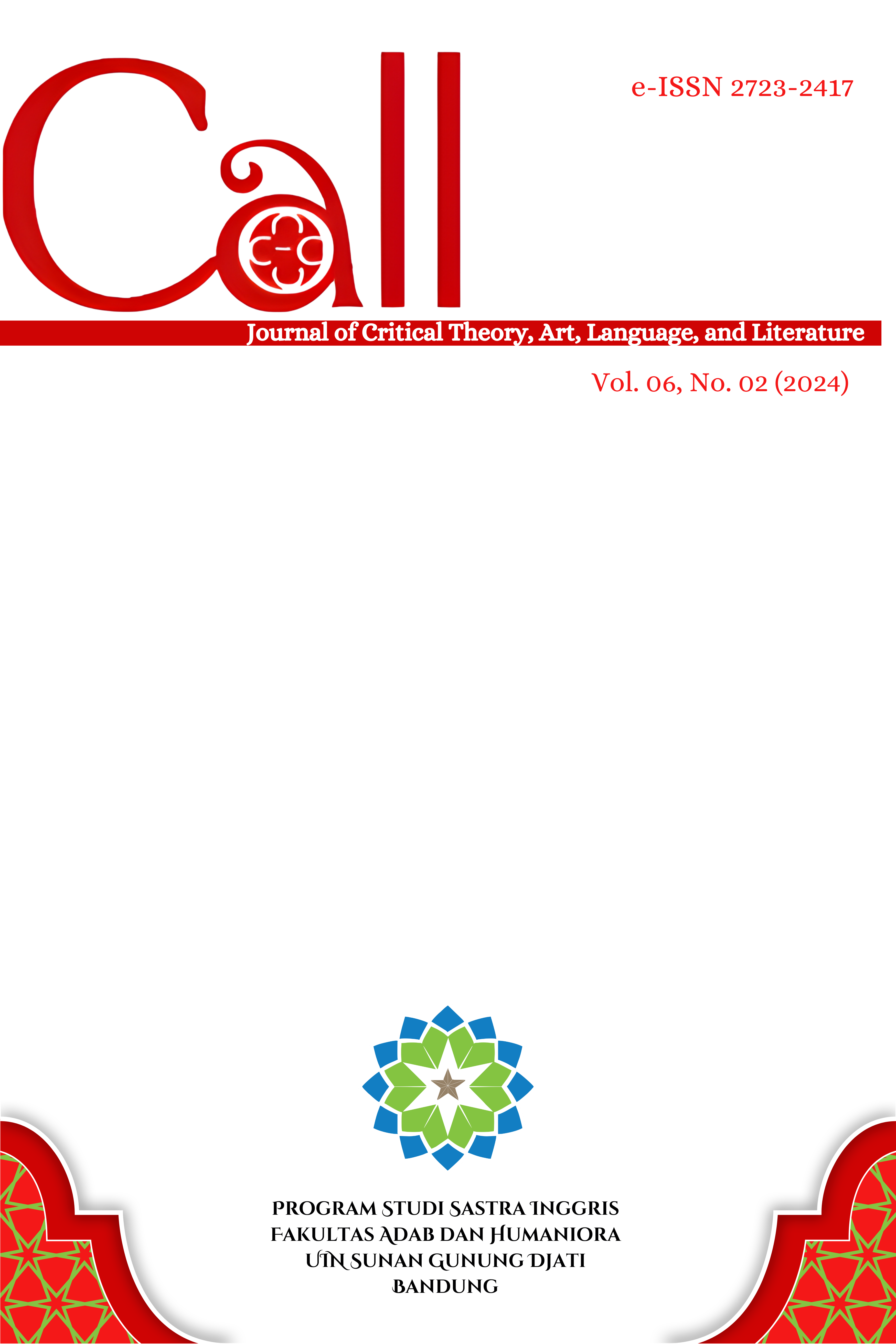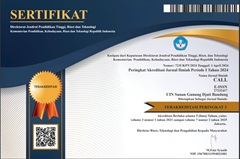CODE-SWITCHING AND CODE-MIXING USED BY BOY WILLIAM AND VALENCIA TANOESOEDIBJO IN A VLOG
DOI:
https://doi.org/10.15575/call.v6i2.37781Abstract
This study investigated the phenomena of code-switching and code-mixing as employed by Boy William and Valencia Tanoesoedibjo, focusing on identifying their types, underlying reasons, and contributing factors. Adopting a qualitative research design, the study analyzed non-numerical data, specifically the spoken utterances of Boy and Valencia in a vlog, where instances of code-switching and code-mixing occur. The classification of code-switching follows the framework proposed by Poplack (1980), while the identification of code-mixing types relies on Hoffman's (1991) model. Additionally, Hoffman's (1991) framework is utilized to explore the reasons behind their use of code-switching and code-mixing. To further examine the influencing factors, the study employs the theoretical framework of Bhatia and Ritchie (2004). The findings indicate that Boy and Valencia employed five of the seven identified reasons for code-switching and code-mixing: discussing specific topics, expressing emphasis, using interjections, clarifying speech through repetition, and ensuring clarity for the interlocutor. Regarding the influencing factors, the analysis reveals that participant roles and relationships, situational contexts, message-intrinsic features, and attitudes towards language, including dominance and security, are significant contributors. Moreover, an additional factor identified in the study is their prior experience of living overseas, which further shapes their linguistic choices. Keyword: code-switching, code-mixing, type, reason, factor
References
Afryanti, R., Daud, B., & Muthalib, K. A. (2021). A study of code-switching and code-mixing used on YouTube channel: A comparison of Indonesian YouTubers. English Education Journal, 12(3), 495–510.
Bhatia.Tej K, & Ritchie William C. (2004). The handbook of bilingualism. Oxford: Blackwell Publishing.
Denscombe, Martyn. (2007). The good research guide : for small-scale social research projects (3rd eds). New York: Open University Press.
Hayati, R., & Anindhita, W. K. (2024). Code switching and code mixing used by students in social media. Journal of English Literature, Linguistic, and Education, 5(1), 21-27.
Hoffman, C. (1991). Introduction to bilingualism. London: Longman.
Nurhayati. (2021). A Study of code switching and code mixing on youtube talk show curhat bang Denny Sumargo With Cinta Laura. International Journal of English and Applied Linguistics.
Poplack, S. (1980). Sometimes I'll start a sentence in Spanish Υ TERMINO EN ESPANOL: toward a typology of code-switching. Linguistics, 18(7-8):581-618
Susilawati, E., & Iis Andriani, D. (2023). Code-Switching and Code-Mixing Analysis in Indonesian Songs Lyrics by Un1ty. BASIS, 10(1), 67-78.
Wardhaugh, R. (2006). An introduction to sociolinguistics (5th edition). Oxford: Blackwell Publishing.
Yunita, R. R., & Suryani, M. S. (2019). Tag switching found in instagram: a sociolinguistic aproach. Scientia Journal, 1(2), 1-10.
Downloads
Published
Issue
Section
Citation Check
License
Copyright (c) 2024 CALL

This work is licensed under a Creative Commons Attribution-ShareAlike 4.0 International License.
Authors who publish in CALL agree to the following terms:
- Authors retain copyright and grant the journal right of first publication with the work simultaneously licensed under Attribution-ShareAlike 4.0 International (CC BY-SA 4.0) License that allows others to share the work with an acknowledgment of the work's authorship and initial publication in this journal.
- Authors are able to enter into separate, additional contractual arrangements for the non-exclusive distribution of the journal's published version of the work (e.g., post it to an institutional repository or publish it in a book), with an acknowledgment of its initial publication in this journal.
- Authors are permitted and encouraged to post their work online (e.g., in institutional repositories or on their website) prior to and during the submission process, as it can lead to productive exchanges, as well as earlier and greater citation of published work (See The Effect of Open Access).




